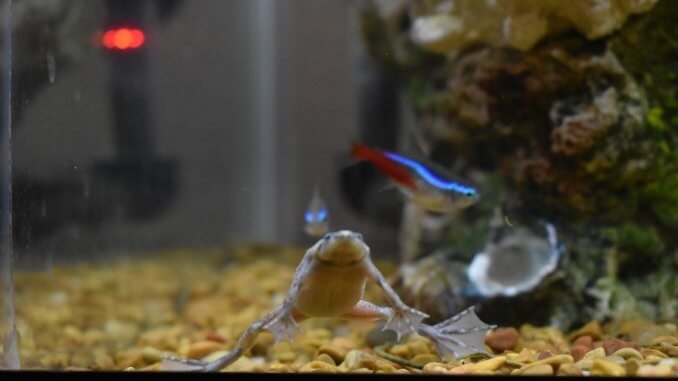
The African dwarf frog is a freshwater amphibian of the Hymenochirus family. This species is a great addition to freshwater tanks with its unique coloring and physical traits.
African dwarf frogs bring activity and entertainment to an aquarium. The species coexists peacefully with non-predatory fish species, making it popular with beginner and expert aquarists alike.
TABLE OF CONTENTS
African Dwarf Frog Facts & Overview
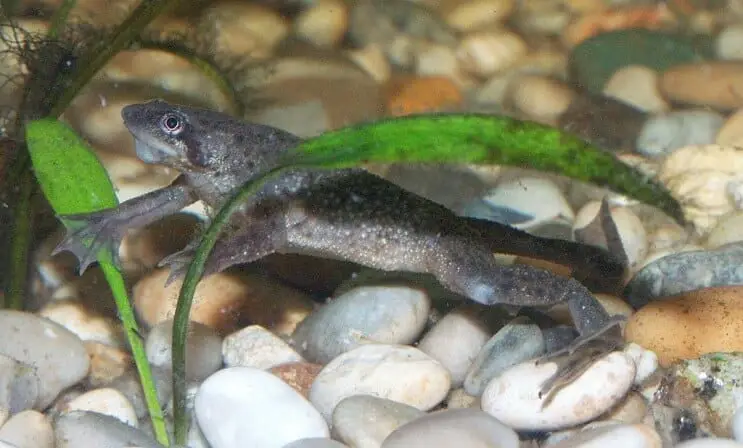
| Scientific name: | Hymenochirus curtipes |
| Common names: | African dwarf frog |
| Water type: | Freshwater |
| Distribution: | Native to Africa, especially equatorial regions |
| Size: | 2–3 inches |
| Life expectancy: | 5–10 years |
| Color: | Olive-green to brownish-green |
| Diet: | Omnivore |
| Temperament: | Peaceful |
| Minimum tank size: | 10 gallons |
| Temperature: | 74–80°F (24–26.7°C) |
| pH: | 6.5–7.8 |
| Hardness: | 5–20 dGH |
| Care level: | Intermediate |
Origin
African dwarf frogs are commonly found in the rivers and ponds in African countries like Nigeria, Congo, and Cameroon. However, these frogs have also spread to other African countries with warmer climates and substantial river systems.
Dwarf frogs are often kept by aquarists who don’t want much cleanup, and who keep their tank nearby where they can watch the amphibians.
Adult Size & Life Expectancy
Adult female African dwarf frogs can reach a length of up to 3 inches, while male frogs are up to 40% smaller.
When kept in small-size tanks of less than 10 gallons, these frogs will not mature to the full 3-inch length, and may only reach a length of 1¼ inches.
African dwarf frogs typically live 5–10 years.
Availability
While the African dwarf frog isn’t usually stocked by small pet stores, there are specialized breeders across the US and Canada that breed, sell, and ship them.
The average price for an African dwarf frog is $4.99–$6.99 when ordered from:
Appearance & Behavior
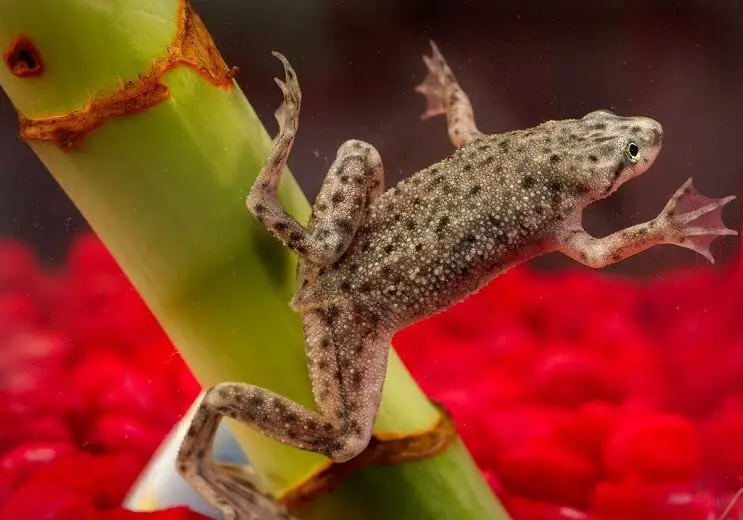
African dwarf frogs have an olive to muddy-brown base color, and occasionally present overlaying dark spots that achieve a mottled coloring. These amphibians are active and lively additions to any freshwater aquarium.
Colors, Patterns, and Size
Female African dwarf frogs are much larger than males, reaching up to 3 inches long. The females have a slightly more elongated body with more prominent genital areas, while males have white bulges behind their front legs.
Unlike other frog species, the African dwarf frog has no tongue or teeth, relying on simply swallowing the edible components of the aquarium.
African dwarf frogs are brown to olive in color, with darker spots across their bodies. Some subspecies have golden coloring or are paler, almost pinkish (known as a blonde coloring).
These frogs shed their skin as they grow. They pale in color during shedding, just before the old skin detaches and the new, darker skin appears.
Typical Behavior
African dwarf frogs are peaceful cohabitants of freshwater aquariums, and the frogs happily share tanks with other non-predatory frogs and fish. African dwarfs are not territorial, though they may hunt small fish.
The species likes to hang out at the water’s surface where the frog breathes with its fully functional lungs. It also enjoys hiding in caves and around aquatic plants, and foraging for scraps near the bottom of the tank.
When dwarf frogs are comfortable in their tank, they swim actively and are amusing to watch. The species is vocal, and you may hear it grunting and humming in its tank at night, especially during breeding season.
African Dwarf Frog Tank & Water Requirements
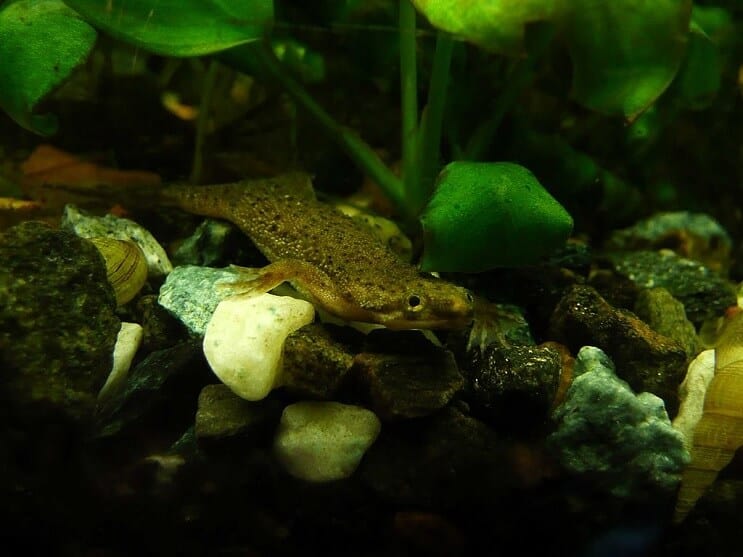
Simulate the African dwarf frog’s natural habitat in the tank with warm water, enough space for swimming (at least 10 gallons), caves and planted aquatic forests to hide in, and good filtration to ensure an absence of disease.
Habitat and Tank Requirements
Start by providing a safe substrate for African dwarf frogs. Ensure the substrate pebbles are large enough so the frogs can’t swallow them and potentially choke while foraging.
Decorate with some rocky caves and aquatic plants like Java fern or Java moss, Amazon sword plant, and duckweed for the frogs to rest and hide in.
Include rocky ledges or plants with large leaves at the surface where the frogs can hang out to breathe. However, if no support exists near the surface, the frog can also inflate, floating with arms and legs extended, so it can breathe near the surface.
Ensure the frogs can climb onto rocky ledges without scraping their skin, and ensure the ledge is easily accessible from the surface of the water. The frogs can quickly dry out and dehydrate without easy water access.
African dwarf frogs are nocturnal. Provide the tank with 10–12 hours of light per day for the frogs to regulate their internal sleep cycles. Standard aquarium lights provide the correct lighting cycle. Heat the water to the desired temperature by using one 5-watt heater per 1 gallon of tank water.
Ensure the tank size is 10 gallons or more, especially if you keep fish and other aquatic life too. A good quality filter with slow-moving water is best to ensure the tank water remains at the optimal pH and water hardness levels.
Water Conditions
The water requirements for the African dwarf frog are basic and should mimic the frogs’ natural aquatic environment.
Aim for these specific water conditions:
| Water type: | Freshwater |
| Tank size: | Minimum 10 gallons |
| Water temperature: | 74–80°F (24–26.7°C) |
| Acidity: | 6.5–7.8 pH |
| Water hardness: | 5–20 dGH |
| Water supplement: | Start-up bacteria such as Tetra SafeStart |
If you keep freshwater fish in the tank with your African dwarf frog, be sure to find fish with the same tank requirements.
Care & Diet
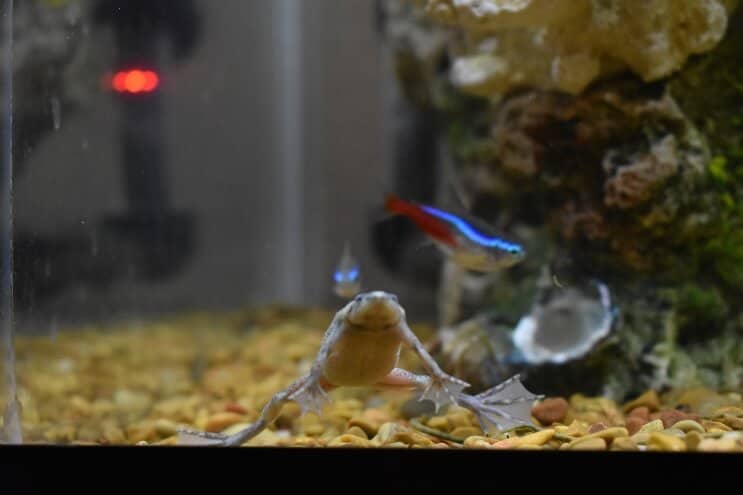
Caring for African dwarf frogs seems easy, though the requirements to ensure the frogs don’t develop skin problems make them an intermediate-level pet to keep.
Feeding this species a balanced diet of carnivorous fish food pellets, live foods like shrimps, bloodworms, and fish fry, helps ensure it remains healthy.
Care for dwarf frogs by checking them for diseases, cleaning the tank water and substrate frequently, and meeting the frogs’ social needs by keeping them with other dwarf frogs.
Diet and Feeding
Feed the frogs twice daily, and never add more food than what they can eat in two minutes. Monitor each feeding, and gently scare away any fish mates that try to eat the frogs’ food.
Follow the frog’s nocturnal life cycle by feeding them early in the morning and again at sunset. Feed the frog pellet foods for most meals, with some variety two to three times a week. These frogs can quickly become obese.
General Care
Caring for the African dwarf frog is easy. Be sure to change 10% of the tank water weekly (with a 25% change monthly), scrub the gravel, and vacuum the substrate weekly to remove uneaten food and feces.
African dwarf frogs happily cohabitate with large, non-aggressive fish species, and they love having other dwarf frogs around for mating and to sing to.
This frog isn’t a good pet to handle, as it’s easy to drop and injure due to its squirmy, slimy body.
Common Problems
Ailments that affect dwarf frogs include bacterial infections to the skin, eyes, and mouth, and fungal infections that may show up as a white fluffy growth on or near their eyes.
Treat both conditions by cycling the tank water, testing pH, and adjusting as necessary. Additionally, add healthy bacteria and clean the substrate. Quarantine affected frogs if there is more than one in a tank. Remove any ill fish from the tank if you need to treat them with copper supplements because copper is toxic to frogs.
Is an African Dwarf Frog Dangerous?
No, African dwarf frogs aren’t dangerous, but a common hazard of keeping African dwarf frogs (or any frog species) is the spread of salmonella.
Salmonella can often be contracted by handling frogs with bare hands. An ill frog can affect the health of other frogs, which is why quarantining a sick frog is essential.
Tank Mates
African dwarf frogs are mostly bottom feeders, so partner them with non-aggressive fish that feed in the top strata of the tank.
Great tank mates for the African dwarf frog include:
- Tetras
- Guppies
- Danios
- Hatchetfish
- Gouramis
- Other African dwarf frogs
Breeding
Breeding an African dwarf frog is not hard because these amphibians are very fertile. To successfully breed these frogs, simulate the conditions that the frogs would experience in the wild when breeding season starts.
- Start by gradually, over one month, lowering the water levels in the amphibian-only tank until the water reaches 3 inches deep.
- Next, fill the tank with warm water at 85°F, maintaining the warmer temperature for three weeks.
- Increase the feeding volumes and frequency, providing lots of protein-rich treats, while still ensuring there’s no buildup of excess food that could rot and dangerously increase the nitrate levels of the tank water.
- Within two to three weeks, the female frogs should begin growing bigger — a sign that they are developing eggs inside their egg pouches. The pairs will soon breed, and you can look forward to the mating calls and grumbling sounds of amorous frogs as the eggs are fertilized.
- Tadpoles will hatch after three to six days. Ensure there are loads of hiding spaces in the tank, like ferns and caves, where the tadpoles can hide from hungry tank mates.
Should You Get an African Dwarf Frog for Your Aquarium?
Getting an African dwarf frog is a great idea for those who enjoy an active aquarium with character-filled occupants.
Consider the cost of setting up a tank that will suit your dwarf frogs, the time required to clean out the tanks, and whether you are able to safely handle the frogs if one of them becomes ill.
If you have fast-moving, predatory fish, then adding an African dwarf frog as a tank mate is not a good idea.
African Dwarf Frog FAQs
- Will African dwarf frogs eat dead fish?
- How many African dwarf frogs should be kept together?
- Do African dwarf frogs sing when they are happy?
- Why is my African dwarf frog so fat?
- Do African dwarf frogs need a cycled tank?
- How many African dwarf frogs can you have in a 10-gallon tank?
- Will African dwarf frogs eat tetras?
- How often should I clean my African dwarf frog tank?
- Are African dwarf frogs blind?
- Do African dwarf frogs eat snails?
- Why do African dwarf frogs sing?
- Do African dwarf frogs need a heater?
- Can African dwarf frogs jump out of the tank?
- What do African dwarf frogs need in their tank?
- Can African dwarf frogs live with fish?
- Can you touch African dwarf frogs?
- Do African dwarf frogs need land?

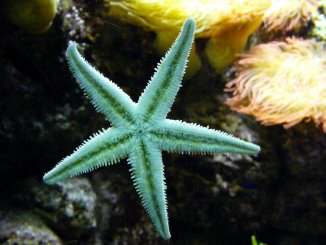
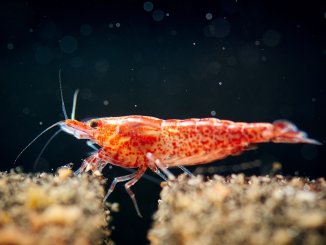
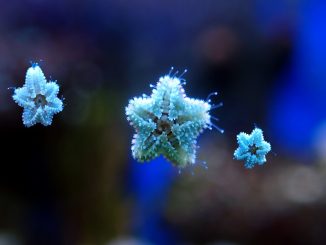
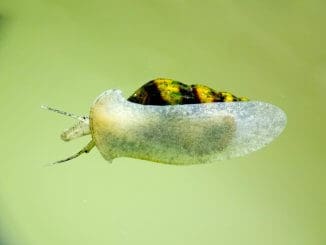
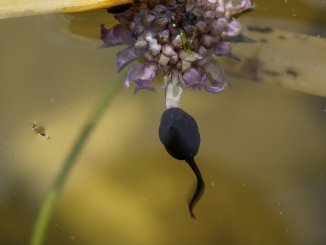
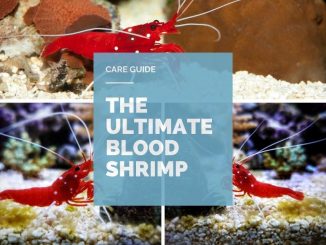
I have had an African Dwarf frog for 8 and a half years now. My mother got it for me for Christmas in 2011 and i have been feeding it frog pellet food from petco 2-3 times per week. I clean the small tank with water and then fill it up with water from the refrigerator. I made sure to microwave the water and have it be room temperature before I put him/her back in. I do this whenever the water gets to be only an inch and a half high in the tank. There is no cover on the top of the tank, and he/she has never attempted to get out. I place two rocks leaning against each other so he/she can go underneath, that is it’s favorite spot to be. I know they do not typically live this long, so I just wanted to share how I care for it.
They’re life span ranges to 10-15years, they should have at least 10 inches of water to swim around, and you should never fully swap water or use drinking bottled water, or microwave it for that matter, let it adjust itself to room temperature then add it to the tank and never do more than a 50% swap unless it’s that deplorable of conditions, use gravel cleaners whenever possible to not stress the frogs and definitely don’t swap their water that often. Feed on a consistent every other day if they’re an adult, they’re memory works and they’ll expect food, the rocks sounds like a disaster waiting to happen, African frogs are sooo clumsy and can cut themself on gravel/displays and knock over things that aren’t flat on the ground, give the guy some room to swim around in, they are escape artist but obviously if u only give them an inch of water when the tank could hold 18” they aren’t wall climbers, a lid will keep very harmful bacteria and no good spiders out
I’m getting a larger tank about 50 gallons will my frog be okay in it?
Hi Candice, yes a 50 gallon tank is great as long as you follow the habitat requirements in this article. Thanks, Robert
yes, your frog should be just fine in a bigger tank. As long as you make sure they can get up to the surface with out getting caught up in any decorations. I have two in my 50 gallon tank and they love it.
if you have one frog I really suggest getting one or two more, if you plan on getting other fish or have other fish you should pick peaceful fish such as guppies, platies, and mollies. if you have a chichild DON’T put the frog in there, the chichild WILL eat them and,or kill them.
it depends on how deep the tank is… typically a 50 gallon is too deep :/
Can 3 frogs survive in a 5 gallon tank?
Sure they will. I had 3 in a 5 gallon hex tank for almost 8 years before they started to die. I now have bought 3 for my son and set them up in a 5 gallon tank with an overwater filtration but no power head or strong bubbler as they don’t like strong current. They can drift in it while feeding on dehydrated blood worms. The over water filter actually makes the dried worms look alive dancing almost! I’ve found that these frogs WILL forage and look for food at the top of the water as well as at the bottom of the tank. I feed the frog pellets first and let them search around for it and then they get a treat by getting a few dried blood worms on top that float and dance until gulp! We are thinking of growing sea monkeys (brine shrimp) to keep next to the frog tank for live food.
I don’t believe 3 ADFs in a 5g will be overstocked in terms of parameters as long as the tank is planted and you have good filtration (like an oversized sponge filter). I do believe that tank size would be too small in terms of territory. ADFs can get very aggressive during feeding time towards one another, and being in such a small tank might make them aggressive all the time. I would recommend a 10g or larger.
you should probably only put 2
They should be alright, may be a little small 7-8 would be ideal but sense they are all the same breed you should have no issues, just refrain from adding more or any fish
Is it necessary to get dwarf frogs in pairs, or is it ok a quantity of three, small aquarium with plenty of room to hide. Live plants to sit on too. How deep is to deep for dwarf frogs to swim to the top of the aquarium?
i have a 2.5 gallon tank with two African dwarf frogs in it, is the tank big enough fro them? also, the larger frog is very active, where as, the smaller frog swims around occasionally
that is probably due to the tank being too small. frogs aren’t like fish in the way that they need more space… around 3 – 5 gallons per frog. I would recommend upgrading to a 10 gal
You should allow 1 gallon per frog minimum, but with other aquatic life the 1 inch to 1 gallon rule works like a charm, to give them their own space I’d recommend a 5 gallon.
my African dwarf frog keeps climbing out of the water and i’m worried she will dehydrate and die. is this normal? shes been doing it for the past two days I’ve had her.
ADFs that are spending the vast majority of their time at the surface are often times sick. While it is normal for them to nap at the surface, spending all day and/or trying to climb out is usually a bad sign. If the frog is actually trying to get out of the water completely, it may have a fungal infection or you may have high amounts of ammonia in the water. It may be beneficial to look into the signs and symptoms of Chytridiomycosis, a fungus that affects many species of frogs. And make sure you are regularly testing your water for ammonia, nitrites, and nitrates.
Check your parameters- maybe it has high ammonia levels?
I hope your frog is still with you. It isn’t normal for them to climb out of the water as they are fully aquatic. If it is climbing right out of the water there is something wrong with your water conditions and your frog is trying to escape them.
Test your water and do regular water changes until you get your system settled.
It is very normal, they love to escape, but DONT let them, they can dehydrate in 10minutes and only survive a maximum of 20-30 so time is of the essence and yes they will forget.
HELP!!! I woke up two days ago and my adf was found upside down on the bottom of the tank, and today I just got back after a day of being away and my other one was also found upside down. I thought they were dead but when I went to get them out to put them in a baggie, one moved a little, after that she wasn’t responding to me poking her With tongs. And the one I found recently sometimes responds to my touch, they haven’t been eating at all that I see for the past week and I thought they might be eating when I wasn’t looking. My water conditions are perfect for the frogs temperature too. I NEED HELP
I have a 50 gallon tank with 4 ADFs. It’s a community tank with fish and shrimp, and also live plants. How do I ensure that the frogs are fed properly without the other fish eating their food? I have purchased frozen bloodworm. Thanks
what happens if my frog eats some of the gravel in the tank? I think it may be too small and his little belly looks swollen :(
In setting up the tank what kind of water do I use? Do I need to treat the water in some way before I put the frogs in it?
What about the water that I replace every week?
Hello, I have a bunch of Rams-horn snails that I keep to clean my tank, I also sell their offspring on Kijji :) Will African Dwarf Frogs eat the soft-shelled young, or even the slow-moving adults? Thanks.
My frog is definitely not nocturnal. He moves around all day and at night he hides and sleeps.
Our little froggie of this species is now 13 years old!
How big is your tank? Does the frog feel threatened by their tank mates? If the answer if no to both, you might just have a troublemaker lol.
I have 10 frogs in a 5.5 gallon tank filled with banana plants. It’s very fun. I’m going to get a school of neon’s to go with them
Hello, ive had my African dwarf frogs for around 10 months however one of them sadly died. Currently the other one is in a tank by itself and im concerned that if i add another frog that maybe smaller in size that they may attack eachother. The frog i have seems very docile but would like some advice on what to do. Can anybody help?
I have had an African water frog for 2 years. He is in a 5 gallon tank with a filter. There are 3 snails also in the tank. The water gets cloudy so quickly, needing to be changed at least once a week. Any suggestions?
Do they breed a lot? I dont want to end up with a whole bunch
Safer to have a cover over your tank or she would die if out of the water and you did not realise. I have my three in a well established tank with tetra, a bristle nose plec and cloud minnows Fun to watch.All get along well.
My frog is doing the “zen” thing a lot. How much is too much, as in a sign of illness? It doesn’t seem to have any fuzziness on the skin, wounds, or red patches, and it isn’t bloated. It is still eating. I have a second frog in the same tank, as well as a beta fish, if my lethargic zen frog is sick, then is my other frog and beta fish in the same tank at risk?
I just recently purchased one to add to my tank that also has a betta, 2 snails, some shrimp and 2 guppies! The frog is so cool and fun to watch in the tank and best of all is I have the coolest betta because he seems super happy with his tank mates (I did not think the guppies would survive him) now I added each one slowly to see how my betta reacted and he is just a peaceful betta everyone seems quite happy. I also only keep live plants in my tank. Cool little frog! Very informative page thank yo
For those of you that may be interested in the life span of these little frogs.
I was given 2 African Dwarf frogs in 2005. One passed away in August of 2020 and I do still have the other frog who has had dropsy for nearly 1 year. The tank is only 2 gallons, water temp is between 78 and 80 degrees, and is feed frog pellets about 5 times a week.
Could i put frogs in a 1.7 gallon tank ):?
My dwarf frog used to go bananas at night swimming up and down and all around …. but today it only want to sit on the very top of a tank toy. It seems really lethargic. Should I be worried? He lives w an unusually calm beta and a snail in a three gallon tank.
Hi. Thank you for your informative site. My Daughter and I have just set up an aquarium for our two baby African Dwarf frogs. The first few weeks have been fine so far, but this morning I discovered one of them had climbed into the filter unit, and had his foot stuck to one of the filters. Distressed, and trying to free himself. I could not free him naturally, and sadly had to use a plastic pick to free his leg. He is now missing a foot, and unable to swim properly. I have watched him closely since, and he has eaten the fresh worms I have placed in front of him. His leg is trailing behind him. All of this is very upsetting. What do you suggest we do, or will his leg heal or limb re-produce?
Hi! I absolutely adore fish and am SO EXCITED that I can keep frogs! I was wondering about water care. I am worried that I am missing something in all the research I’ve done. I know about temperature, water conditioning, and ph. I have been looking into nitrates and such, but can’t seem to figure out if it is important enough that I spend my limited amount of money on it. Is there anything else I should be worrying about? Specifically for frogs and/or neon Tetras?
I have a female African dwarf frog. I got her as a froglet – she still had a small tail and her front legs weren’t completely developed yet. I’ve had her for 13 years, and she’s still doing just fine! I ordered her from Grow-a-frog as a science lesson for my 2nd grade students. I never imagined she’d live so long!
How do you know if the tank is the right size. I want to make sure he has the right amount of space. Anyone know?
Thanks for all the wonderful information! I’m better prepared now to be a good frog mommy!
Is Purigen safe to add to your filter with
African Dwarf Frogs? Is it safe to use a little bleach to clean decor if you rinse it very well before putting in tank?
I just rescued an African dwarf frog from a horrible situation. I know nothing about frogs. He’s covered in I think algae, his back leg is mangled and his front leg doesn’t seem to be working well. He seems to be in rough shape. Could someone please tell me what to give him that may help?
I have a 125 gallon tank live plants ect will have around 12 endler guppies would these little cuties be ok in there.